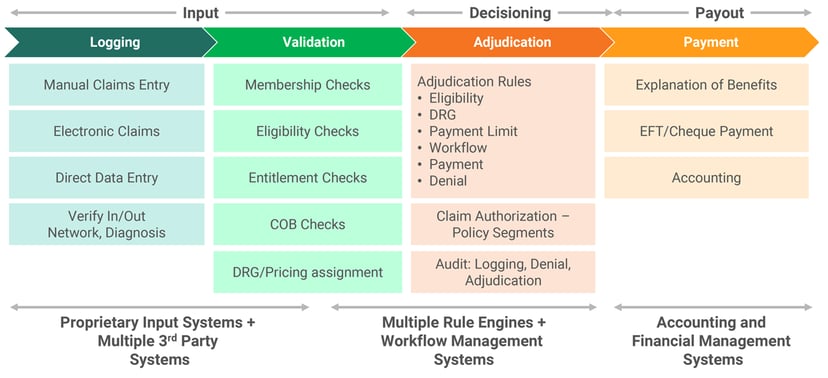Continuing our blog series examining a ‘year in the life’ of Sales Strategy and Operations. This time of the year (late spring, early summer) marks the classic sales force sizing season. Why now ? Many executives engage in the strategic planning and/or anticipate next year’s budgeting process, which is why this is a perfect time to take a fresh look at the overall sales force investment.
In Part 1 of this blog, we share an overview of the classic sales force sizing approaches and advantages/limitations. [Caveat: this is not an exhaustive list, but the most common approaches in our experience]. For Part 2 of the sales force size blog, we will explore further when it is appropriate to use a given method. Each approach could easily be covered in its own blog posting, but we’ll start with an overview. Future blog posts will dive deeper into specific methods and the latest thinking emerging from Axtria’s R&D labs.
The classic sales force sizing methods include:
Same as Last Year: Pretty self-explanatory! For instance, we had 100 sales people last year, so we’ll have 100 sales people this year.

- Advantages: Very quick, simple, inexpensive
- Limitations: Internally focused, no consideration for customers or future events, no ROI or financial forecast
Cost of Sales: Set a financial metric that sales force investment will be x% of sales. For instance, we will invest a constant 6% of sales into the sales force.
- Advantages: Very quick, simple, inexpensive, and has a ‘dash’ of financial integrity
- Limitations: Internally focused, no consideration for customers or future events. More importantly, this approach gets the causal relationship WRONG: sales force investment drives sales, not the other way around!
Share of Voice: Set your sales force size based on competitive sales force size. For example, my key competitor has 300 sales people, in order to match that “share of voice”, we will have a 300 person sales force.
- Advantages: Quick, simple, data is often available from 3rd party vendors, is an essential diagnostic, and is externally focused
- Limitations: No consideration for customers or future events, does not provide financial forecast or ROI insights, data can be hard to get (competitor sales force size may be known, but how much effort is invested in a given segment?). More importantly, this approach is a diagnostic, and not very useful to prescribe what is best for your organization (do you want to match competitor share of voice if your product is less profitable?)
Workload Build-up: Quantify the workload required to cover desirable prospects or customers. For instance, we need 51 FTEs to call on 46% of 63,000 customers / prospects at least quarterly.
- Advantages: Relatively quick, data is generally available, and the math is straight forward. Also, this exercise requires your team to segment and quantify customers, specify selling roles, and define essential work. Thus, the outputs of the workload build-up approach are very helpful in implementation. For example, prospect/customer lists with recommended workloads can be given to sales representatives for guidance. In addition, various workload build-up scenarios can be created and compared.
- Limitations: The workload build-up approach does not distinguish between profitable / unprofitable customers and does not produce a forecast or ROI outcome for sales investment.
Affordable Coverage: Literally calculate how much sales force you can afford, given a sales forecast, profitability, investment hurdles, and other factors. This method takes advantage of important sales force economics such as the portion of sales attributable to sales effort (yes, you read that correctly … not all sales are due to the sales force! Much, if not most, revenue is attributed to ‘brand’ investment), and the carryover of sales force effort (that is, the lingering effect of previous sales activity). Carryover is that observed phenomenon whereby revenues in a vacant territory do not go down to zero.
- Advantages: The benefits of workload build-up plus strong financial fundamentals. In addition, the analytical rigor encourages capability building for your team and firm. For instance, you may want to experiment, gather data, and quantify “carryover” and “sales due to effort” attributes for your sales force.
- Disadvantages: Math is more complex relative to the earlier approaches, and variables such as “carryover” and “sales due to effort” variables are not found with a Google search. More importantly, the Affordable Coverage approach requires a sales forecast as an input. Therefore, the approach cannot generate a sales forecast or an ROI based on varying sales force levels.
Sales Response Modeling: Statistical analysis that estimates sales revenue at various sales force sizes. For instance, the model would indicate how much sales would change if you employ 50, 100, 200 more (or fewer) sales representatives.
Do you remember those economics classes in college ? I vaguely recall that you maximize profit at the point where marginal revenue equals marginal cost. A “sales response model” enables profit optimization. Increase the number of sales representatives until the last one just covers their full cost … this is the point where you maximize your firm’s profits.
- Advantages: Highly defensible – sales executives speak the language of the CFO (incremental revenues, marginal contribution, long-term ROI, etc.), enables scenario analysis, model insights can be applied upstream (e.g., marketing mix) as well as downstream (customer valuation, call planning, etc.)
- Limitations: Requires granular, reliable sales activity data, analysis is relatively difficult and requires time and investment.
You may be wondering which of these classic sales force sizing approaches to use. In Part 2 of this blog, we will further explore which approach to use in a given situation.
What additional sales force size approaches have you used? Which of these has proved helpful / unhelpful, and why?
Are you wondering whether your sales force size is appropriate? Has your product portfolio or market landscape changed significantly Contact us here to compare notes, we’d love to learn more about your business.



